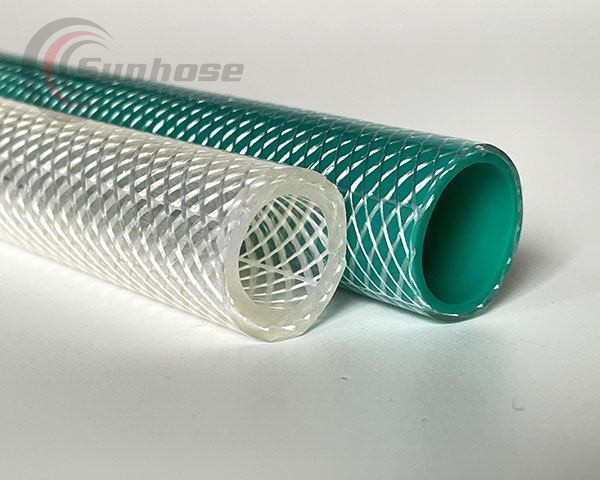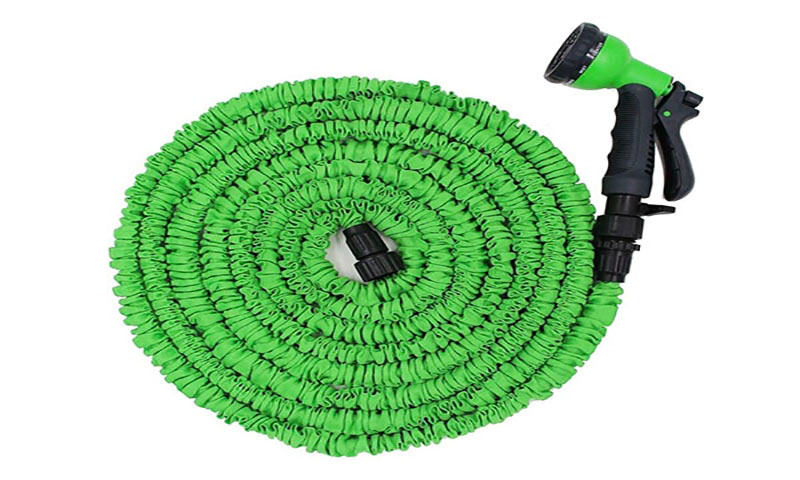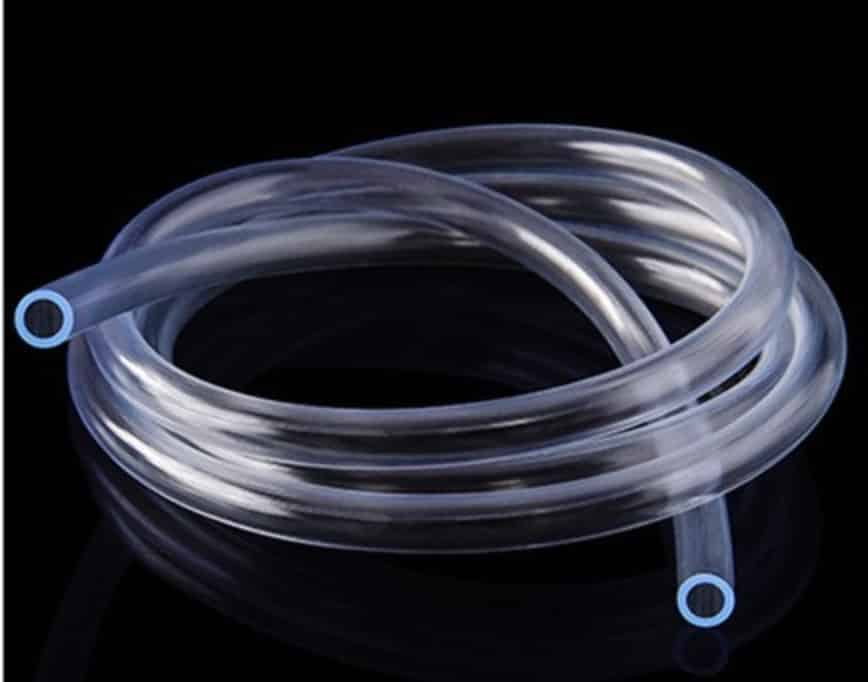Best Garden Hose: The Ultimate Guide for Your Outdoor Watering Needs
- Introduction
- Factors to Consider When Choosing a Garden Hose
- Hose Length
- Hose Diameter
- Material and Durability
- Flexibility and Maneuverability
- Water Pressure Compatibility
- Types of Garden Hoses
- Vinyl Hoses
- Rubber Hoses
- Reinforced Hoses
- Expandable Hoses
- Choosing the Right Garden Hose for Your Needs
- General Gardening
- Watering Large Areas
- Light-Duty Use
- Heavy-Duty Use
- Maintaining and Storing Your Garden Hose
- Proper Cleaning Techniques
- Preventing Kinks and Tangles
- Storing Your Hose
- Additional Accessories and Attachments
- Hose Reels and Carts
- Spray Nozzles and Wands
- Hose Connectors and Repair Kits
- Eco-Friendly Garden Hoses
- Lead-Free Hoses
- Phthalate-Free Hoses
- Drinking Water-Safe Hoses
- Conclusion
- Frequently Asked Questions (FAQs)
1. Introduction
A garden hose is an essential tool for any outdoor enthusiast, whether you have a sprawling garden or a small balcony. It allows you to conveniently water your plants, clean your outdoor spaces, and perform various other tasks. However, not all garden hoses are created equal. Choosing the best garden hose requires careful consideration of several factors to ensure optimal performance and durability.
2. Factors to Consider When Choosing a Garden Hose
When selecting a garden hose, it’s important to evaluate the following factors:
2.1 Hose Length
The length of the hose determines how far it can reach from the water source to your desired location. Measure the distance from your outdoor faucet to the farthest point you need to reach and choose a hose that matches or exceeds that length.
2.2 Hose Diameter
The diameter of the hose affects the water flow rate. Thicker hoses provide higher water volume, making them ideal for tasks that require more water, such as filling large containers or watering extensive gardens. For most general gardening needs, a 5/8-inch diameter hose is sufficient.
2.3 Material and Durability
Garden hoses are commonly made from vinyl, rubber, or a combination of both. Vinyl hoses are lightweight and budget-friendly but may be prone to cracking in extreme weather conditions. Rubber hoses, on the other hand, are more durable and flexible but tend to be heavier.
2.4 Flexibility and Maneuverability
Consider how easily the hose can be maneuvered around obstacles in your garden. Look for hoses with good flexibility, as they are less likely to kink or tangle during use. Hoses with reinforcement layers offer added durability and resistance to kinks.
2.5 Water Pressure Compatibility
Check the water pressure rating of the hose to ensure it is compatible with your water supply. Low-quality hoses may burst under high pressure, while high-quality hoses can handle increased water flow without leaks or damage.
3. Types of Garden Hoses
There are several types of garden hoses available in the market, each with its own advantages and suitable applications. Let’s explore some popular options:
3.1 Vinyl Hoses
Vinyl hoses are lightweight, affordable, and easy to handle. They are suitable for light-duty tasks and occasional use. However, they may not withstand prolonged exposure to harsh weather conditions.
3.2 Rubber Hoses
Rubber hoses are known for their durability and flexibility. They can withstand high water pressure and extreme temperatures, making them suitable for heavy-duty use. Rubber hoses are less likely to kink or crack and have a longer lifespan compared to vinyl hoses.
3.3 Reinforced Hoses
Reinforced hoses have an additional layer of mesh or braided fibers, providing extra strength and resistance to kinks. They are suitable for both light and heavy-duty applications, offering a balance between flexibility and durability.

reinforced pvc hoses
3.4 Expandable Hoses
Expandable hoses are a popular choice for those seeking lightweight and space-saving options. These hoses can expand in length when water is flowing and contract when not in use, making them easy to store. However, they may have lower water flow rates and are not ideal for high-pressure tasks.

Expandable/collapsible garden hoses
4. Choosing the Right Garden Hose for Your Needs
Now that we have discussed the key factors and types of garden hoses, let’s consider how to choose the right one for your specific needs:
4.1 General Gardening
For everyday gardening tasks, a medium-duty hose with a length of 50 to 75 feet and a 5/8-inch diameter is usually sufficient. Look for a hose that offers a good balance of durability, flexibility, and affordability.
4.2 Watering Large Areas
If you have a large garden or need to cover a vast area, consider a heavy-duty hose with a length of 100 feet or more. Opt for a hose with a larger diameter to ensure sufficient water flow for efficient watering.
4.3 Light-Duty Use
If you only need a hose for occasional light-duty tasks like washing your car or watering potted plants, a vinyl hose may be suitable. Choose a lightweight hose with a length of 25 to 50 feet for easy maneuverability.
4.4 Heavy-Duty Use
If you require a hose for demanding tasks such as power washing or filling large pools, a rubber hose with a length of 100 feet or more is recommended. Look for a hose with strong reinforcement layers to withstand high water pressure.
5. Maintaining and Storing Your Garden Hose
Proper maintenance and storage can significantly extend the lifespan of your garden hose. Follow these tips to keep your hose in optimal condition:
5.1 Proper Cleaning Techniques
After each use, drain the water from the hose and remove any dirt or debris. Use a hose nozzle or sprayer attachment to rinse the hose thoroughly. Avoid using harsh chemicals or abrasive materials that could damage the hose.
5.2 Preventing Kinks and Tangles
When using the hose, try to avoid sharp bends or kinks that can restrict water flow. Use hose guides or reels to guide the hose along the desired path and prevent tangles. Be cautious of running over the hose with heavy equipment or vehicles.
5.3 Storing Your Hose
Store your garden hose properly to prevent damage and maximize its longevity. Coil the hose loosely, avoiding tight bends that can cause kinks. Use a hose reel, hose hanger, or storage box to keep the hose neatly organized and protected from the elements.
6. Additional Accessories and Attachments
Enhance the functionality of your garden hose with various accessories and attachments:
6.1 Hose Reels and Carts
Invest in a hose reel or cart to conveniently store and transport your hose. These accessories help prevent tangles and make it easier to unwind and rewind the hose.
6.2 Spray Nozzles and Wands
Attach a spray nozzle or wand to your hose for versatile watering options. Adjustable nozzles allow you to control the water flow, switch between different spray patterns, and target specific areas with precision.
6.3 Hose Connectors and Repair Kits
Keep extra hose connectors and repair kits on hand for quick fixes. These accessories come in handy if your hose develops leaks or if you need to extend the length of your hose by connecting multiple pieces.
7. Eco-Friendly Garden Hoses
If you prioritize environmentally friendly options, consider the following:
7.1 Lead-Free Hoses
Lead-free hoses are made without harmful lead additives, ensuring the water remains safe for use in gardens, vegetable beds, and for drinking water purposes.
7.2 Phthalate-Free Hoses
Phthalates are chemicals commonly used in plastic hoses that can leach into the water and have negative health effects. Opt for phthalate-free hoses to minimize exposure to these harmful substances.
7.3 Drinking Water-Safe Hoses
If you plan to use your hose for drinking water purposes, look for hoses specifically labeled as “drinking water-safe.” These hoses are manufactured with materials that meet strict safety standards.
8. Conclusion
Selecting the best garden hose is crucial for efficient and hassle-free outdoor watering. Consider factors such as hose length, diameter, material, flexibility, and water pressure compatibility when making your choice. Assess your specific needs, whether it’s general gardening, watering large areas, light-duty use, or heavy-duty tasks, and choose a hose that suits your requirements. Proper maintenance, storage, and the use of additional accessories will help maximize the lifespan of your hose and enhance its functionality.
9.Frequently Asked Questions (FAQs)
Q1: How often should I replace my garden hose?
A1: The lifespan of a garden hose depends on its quality, usage frequency, and proper maintenance. On average, a well-maintained hose can last anywhere from 5 to 10 years.
Q2: Can I leave my garden hose outside during winter?
A2: It’s best to store your garden hose indoors during winter to prevent freezing and potential damage. If you need to keep it outside, ensure it is drained of water and properly insulated to withstand freezing temperatures.
Q3: How do I fix a leak in my garden hose?
A3: To fix a leak, cut out the damaged section of the hose and attach a repair connector or use a hose repair kit. Ensure the connection is secure and doesn’t leak before using the hose again.
Q4: Can I use a garden hose for drinking water?
A4: While some hoses are labeled as “drinking water-safe,” it’s generally recommended to use hoses specifically designed for drinking water purposes to ensure water quality and safety.
Q5: How should I clean my garden hose?
A5: Clean your garden hose by thoroughly rinsing it with water after each use. Avoid using harsh chemicals or abrasive materials that can damage the hose.


 sunhose
sunhose